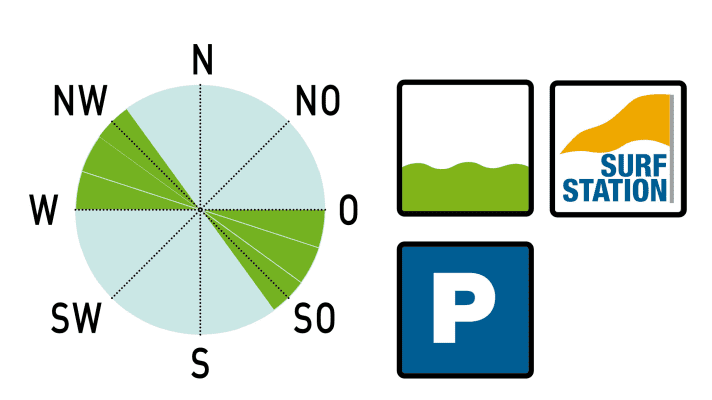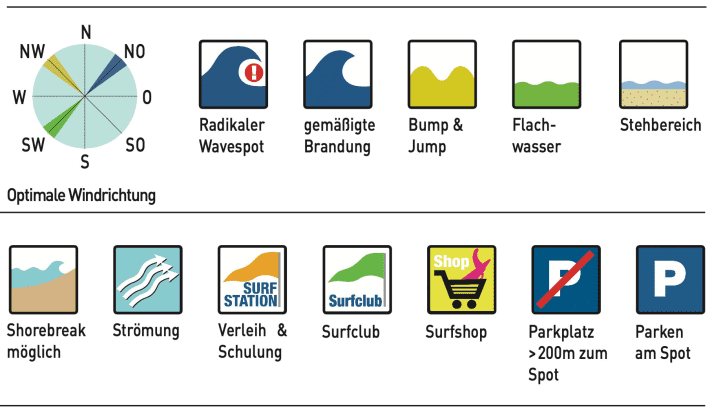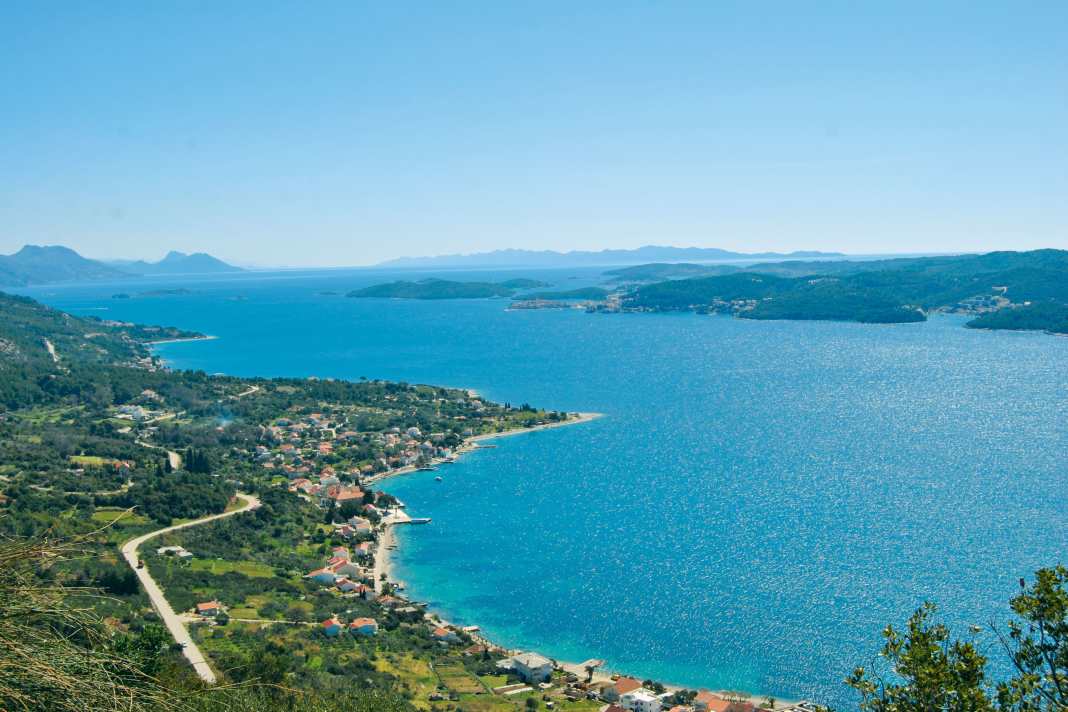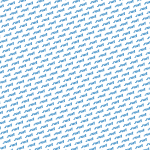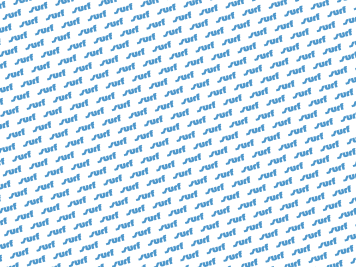The two windsurfing and wingsurfing strongholds of Premantura in the north and the Golden Horn on Braç are well known in Croatia - otherwise there's still a lot of no man's land here. After a seemingly endless winter in Bavaria and never-ending cold days on the water, our spot reporter Woife Strasser went on tour again before the start of the Easter holidays.
You can find these spots in the Pelješac Spot Guide:
(Click on the advert to go directly to the description)
The wind forecasts for the north of Germany looked good, but the temperatures there were less so. So the choice for our spring trip fell on the south of Croatia, more precisely: the Pelješac peninsula, which stretches almost 70 kilometres into the Adriatic Sea northwest of the port city of Dubrovnik. At this early stage of the year, the forecast with a south-easterly wind, 20 degrees air and 15 degrees water seemed like something from another world.
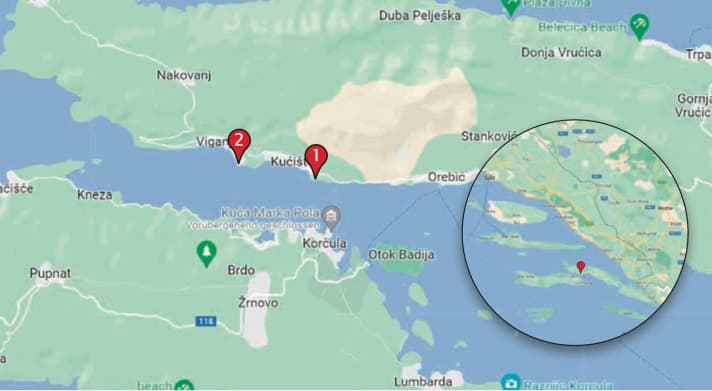
We've been to the peninsula several times before - in spring, summer and autumn, so we know the spots and knew what to expect when we pay another visit to the "Pelje:Schatz". The journey there alone is very relaxed at this time of year, the motorways are empty, the borders can be crossed quickly and easily and the price of petrol on the journey through - by current German standards - is even less of a burden on the stomach. Travelling to Croatia by car used to mean endless winding roads with potholes and poorly maintained motorways. There's not much sign of that today; the journey takes you along new roads and motorways across the Balkans to the ferry port of Ploče.
Pelješac is a great spot for families and pleasure surfers. Freeriders and foil surfers will find very good conditions here. (Woife Strasser)
Warm, empty and clear water - Pelješac is the ideal spring spot
To cut a long story short: We were not disappointed this time either and at the end of the trip we had a personal wind rate of 80 per cent, even though we were travelling with rather small freestyle equipment and a 5.6 is our biggest sail. Many people think that you can only be happy on the Pelješac peninsula with freeride or foil equipment. During the main season between June and September, this is usually true, when sunny, high-pressure weather - which is the rule during the summer - creates a moderate thermal from the west, which usually starts in the early afternoon. The light basic wind is then strengthened between the mountain ranges of Pelješac and the offshore island of KorČula and blows at ten to 18 knots in the narrows - large freeride sails or foils are then the order of the day. In the low season, the thermals are less reliable, but the Scirocco from the south-east brings another component into play, which can bring warm weather and strong winds.
Crystal-clear water, mild temperatures and only a handful of surfers on the water - the surfing experience was once again fantastic. The locals were already surfing barefoot and without bonnets at Easter. Another thing that makes the spots on Pelješac so relaxed is the fact that the thermals here don't start until midday - so late risers don't usually miss out on anything. The short distances also contribute to the holiday feeling: There are spotless campsites under pine trees on site, while the villages of Kućište and Viganj not only offer dreamy alleyways, but also infrastructure with shopping facilities, cafés, restaurants and bars.
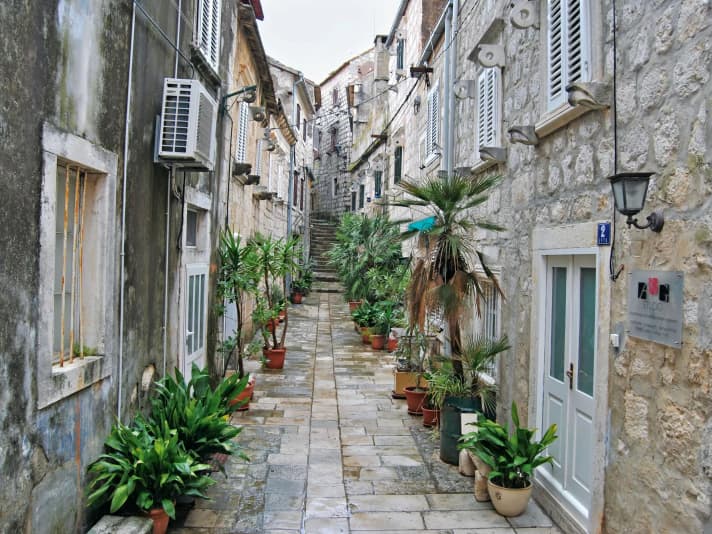
Great surroundings and mild climate
For many Croatia connoisseurs, spring is the best time to travel. While Central Europe is still in the grip of winter, orange and lemon trees are already in bloom all around the Adriatic, ripe almonds hang from the trees, the scent of herbs is everywhere - and dolphins still regularly venture close to the shore. If that's not enough for you, there are still plenty of alternatives on the Pelješac peninsula, which is surrounded by high mountains and lush greenery, such as a hike up the almost 1000 metre high Sveti Ilija mountain. Particularly on clear days with a light bura, you have a magnificent view of countless islands and across to the Italian mainland. We already knew that Pelješac is a real treasure. But this trip confirmed it once again. The following guide will give you all the information you need to go on your own treasure hunt.
Spot Info Pelješac
Journey
The Pelješac peninsula can be reached from Munich in around eleven hours (approx. 1050 kilometres) via Salzburg, Villach, Ljubljana, a short stretch of road in Slovenia, and then by motorway via Zadar and Split. The ferry in Ploçe operates a shuttle service in the high season, so it is not necessary to book in advance. In the low season, there are usually five departures per day. The crossing takes around an hour and costs 33 euros for a small camper with two people (as of spring 2022). It takes another 30 minutes from the Trpanj ferry harbour to the spot. Information about the ferry connections->
AlternativeTravelling overland and passing through a short section of Bosnia-Herzegovina. A beautiful route, but due to borders and mountainous country roads, at least three hours more should be planned. The journey takes you past vineyards, historic houses and along the Pelješac through the town of Ston with its famous mussel and oyster farm and the longest defence wall in Europe. Since the end of July 2022, a newly built bridge, almost 2.4 kilometres long, has spanned the bay of Mali Ston between Komarna on the mainland and the Pelješac peninsula.
Living & Camping
The Pelješac peninsula is well developed for tourism around the main town of Orebic (approx. 4000 inhabitants). There is a wide range of accommodation in all categories, to be found via the well-known booking portals on the Internet. For us windsurfers and wingsurfers, the towns of Kucište and Viganj are the most suitable. There are numerous campsites and flats here, which are only separated from the sea by a narrow coastal road. The campsites are usually open from April to the end of October. If you arrive outside of this period, you can contact the responsible person via the telephone numbers provided and can then stay there with limited service (but with sanitary facilities) and with electricity and water. Wild camping is prohibited and is strictly controlled in summer. In winter, when the campsites are officially closed, wild camping is often tolerated if you behave appropriately.
Here is an overview of the places on site:
Viganj
Kućište
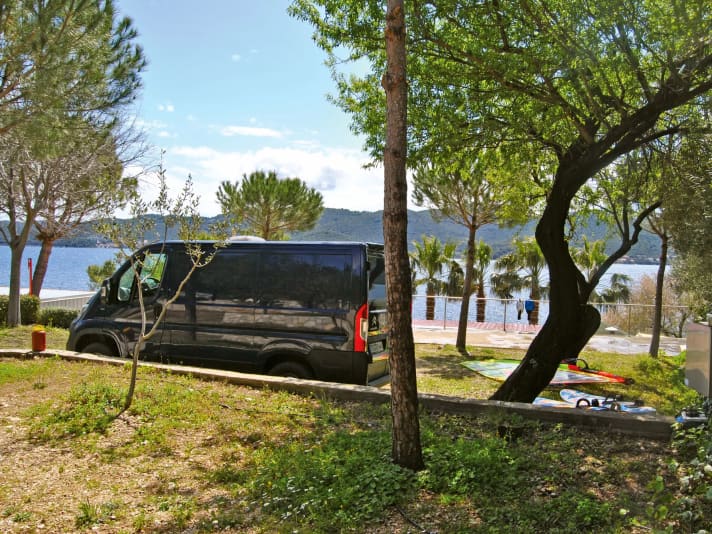
The small supermarket in Kucište (approx. 1 km from the campsites in Viganj) is also open during the winter months. Here you will find everything you need for everyday life. During the season, there are several other shops in Viganj, as well as cafés, bars and restaurants. The restaurants and konobas gradually open from April onwards, otherwise you will always find what you are looking for in Orebic. Open all year round and highly recommended is the bar-restaurant La Casa, right by the harbour.
Wind, weather & neoprene tips:
In the summer months from June to August, the predominant thermal wind is the maestral from a west to north-westerly direction. When the high pressure is stable and there are no disturbances, it blows from around 1 p.m. with the typical 8-15 knots, on good days up to 20 knots. The wind is rarely gusty, but large sails or foils should be brought along, as Pelješac is not a spot for strong wind fans in midsummer. In midsummer, you can expect 50 to 70 per cent planing or foil winds, the air temperature is around 30 degrees and the water is 25 degrees. A shorty or short-sleeved wetsuit is therefore ideal. In recent years, there have also been more and more good days with easterly winds. This wind occurs when there is changeable weather in the Bosnian hinterland, then it blows on Pelješac until midday with up to 20 knots. In autumn, the thermals usually only start between 3 and 4 pm and usually reach eight to 15 knots, rarely more.
Thermals in Pelješac
In the winter months from October to April/May, thermals are sporadic, but the warm jugo (scirocco) from the south-east prevails. The sea is still just under 18 degrees until December and cools down to a still pleasant 14 degrees by March. Even in the winter months, the air temperature is often between 15 and 20 degrees during the day. As a rule, the Jugo is a bad weather wind that builds up slowly, increases over several days and can eventually cause thunderstorms and rain. The Jugo often reaches 15 to 30 knots, the advantage being that this wind, which actually blows from the south-east, is deflected by the coastline and intensified in the channel between Pelješac and Korçula.
In spring (March-May), the thermals from the west pick up again when the weather conditions are high pressure. The weather is often not as stable as in midsummer, but on sunny days the Maestrale is stronger than in midsummer due to the greater temperature difference between the sea and the hinterland - 20 knots are easily possible. The air temperature in spring is usually around 14-20 degrees, but it can still cool down considerably at night. A warm 5/3 neo should then be in your luggage. In our experience, you can expect 40 to 50 per cent gliding wind in spring. In contrast to many other spots in Croatia, the bora from the north-east is less of an issue on the Pelješac peninsula. The bora phases are much rarer and shorter here than further north, but days with gale force winds are still possible, just like anywhere else on the coast. The bora arrives here diagonally offshore from the left and is therefore very gusty in the shore area.
Unfortunately, there are no official wind statistics from the spots. The Water Donkey surf centre keeps statistics, you can find them here->
Waves & Tides
As everywhere on the Adriatic, the tides play no role at all. Due to the sheltered location with numerous offshore islands, large waves are blocked from the south-east at Scirocco, which is why only moderate chop arrives at the Pelješac spots in both westerly and easterly winds, which does not pose any major problems even for intermediates.
Surf schools & shops
The Pelješac peninsula has several surf centres where you can take courses or hire the latest equipment. Here is an overview:
There is also a centre on the other side of the canal on the island of Korçula: Oreb Sailing
Alternative programme
The old defence wall in Ston is considered the largest in Europe and dates back to the 14th century. The local mussel and oyster farm is a tip for gourmets in particular. The nearby island of Korçula with the Marco Polo Museum and beautiful beaches is also worth a day trip. Korçula can be reached from Orebic by ferry or taxi boat. If you would like to explore the mountainous hinterland, you should tackle a hike or bike tour on Sveti Ilija; the views from the Bora location are fantastic. Two hours away is Dubrovnik, one of the most beautiful coastal towns in Europe and a UNESCO World Heritage Site. However, you should avoid peak times here unless you want to be herded through the narrow streets with thousands of cruise ship tourists.
Much more relaxed: The island of Mljet is a nature reserve and is easily accessible from Orebic and Korçula. You can find information here->
Another tip for nature lovers is the Neretva Delta, several parts of the 19,000-hectare area are considered important nature reserves, some of which enjoy protected status. In addition to vegetables, watermelons and citrus fruits, rice is even grown here in the marshy landscape. The delta with its large expanses of water is also known as an ideal breeding ground for numerous bird species.
Good to know
Neoprene shoes are advisable at any time of year, as the entrance to the spots is always pebbly/stony and sea urchins can also be found. As almost everywhere in Croatia, the water gets deep quickly. Croatia is a member of the EU, but has its own currency, the Croatian kuna. The exchange rate is stable at 7.4 kuna to one euro. However, the euro is accepted as a means of payment almost everywhere.
1. the Kucište spot
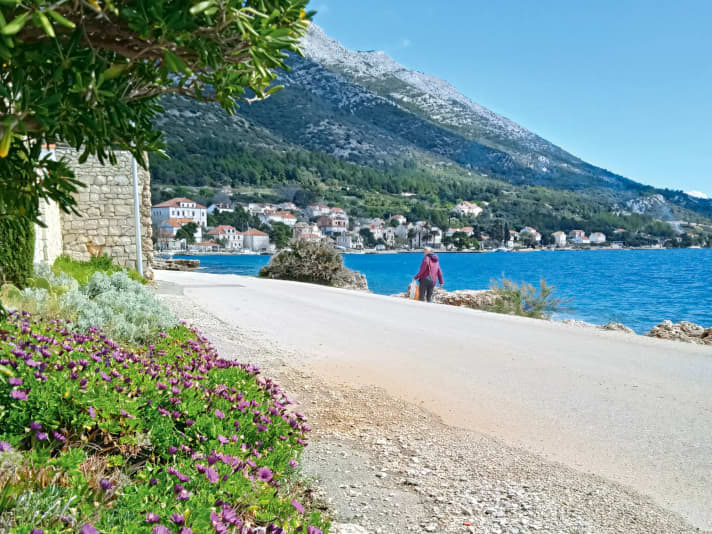
At the Perna and Palme campsites, which are both located directly at the spot, the thermal wind blows sideshore from the right from the west and north-west: you can get from bed to board very quickly here. There are only a few parking spaces available. There are storage facilities for boards and sails on the beach for camping guests. This spot is located at the narrowest point towards the island of Korçula. The more north-westerly the wind blows, the stronger it is here. Due to the narrow passage to the island of Korçula, the wind in Kucište is usually a few knots stronger than in Viganj. The water remains quite smooth, with harmless chop forming for jumping in stronger winds.
If you are travelling in high summer, Kucište has the best wind conditions, but the Scirocco, which regularly blows from the south-east in the off-season, blows a few knots weaker here than at the Viganj spot. The entrance to Kucište is via a pebbly beach, the standing area is small, even with foils you have enough water under your board after a few metres to be able to take off. The Perna surf centre is located on site.
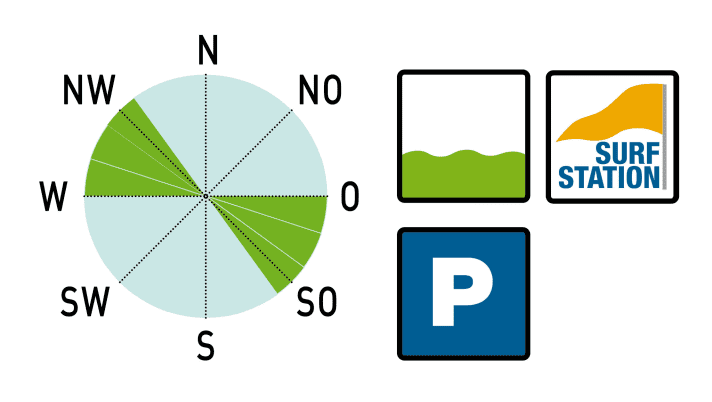
2. the Viganj spot
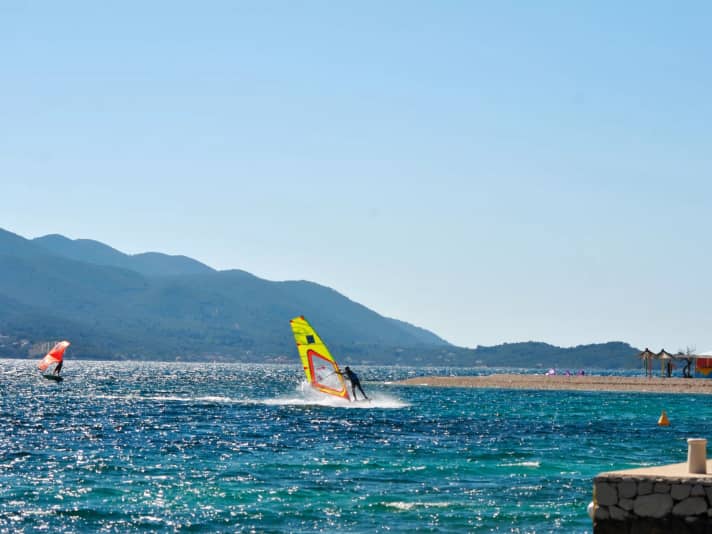
In Viganj there are excellent accommodation and boarding options at the Antony Boy, Maestrale and Liberan campsites - as well as at the Ponte car camp. The campsites are spread over approximately one kilometre and are only separated from the sea by a narrow coastal road. The standing area is barely two to three metres, the beach is pebbly to stony - so shoes are definitely recommended. A thermal westerly wind blows directly sideshore from the right. In a north-westerly direction, you have about 50 metres of wind cover, after which the wind blows freely.
The jugo from the south-east comes into Viganj slightly onshore to sideshore from the left. The water remains flat, with up to half a metre of chop in strong winds. The bora from the north-east comes diagonally offshore from the left and is very gusty for the first 100 metres from the shore. The summery easterly wind in the mornings is weaker here than in Kucište. Here, too, there are only a few parking spaces along the narrow shore road, and the local campsites offer guests storage facilities for surfing equipment. There are shady trees and showers on the beach, and cafés, konobas and small supermarkets are open during the season. Cape Ponte is home to the well-equipped Water Donkey windsurfing and kitesurfing centre.
